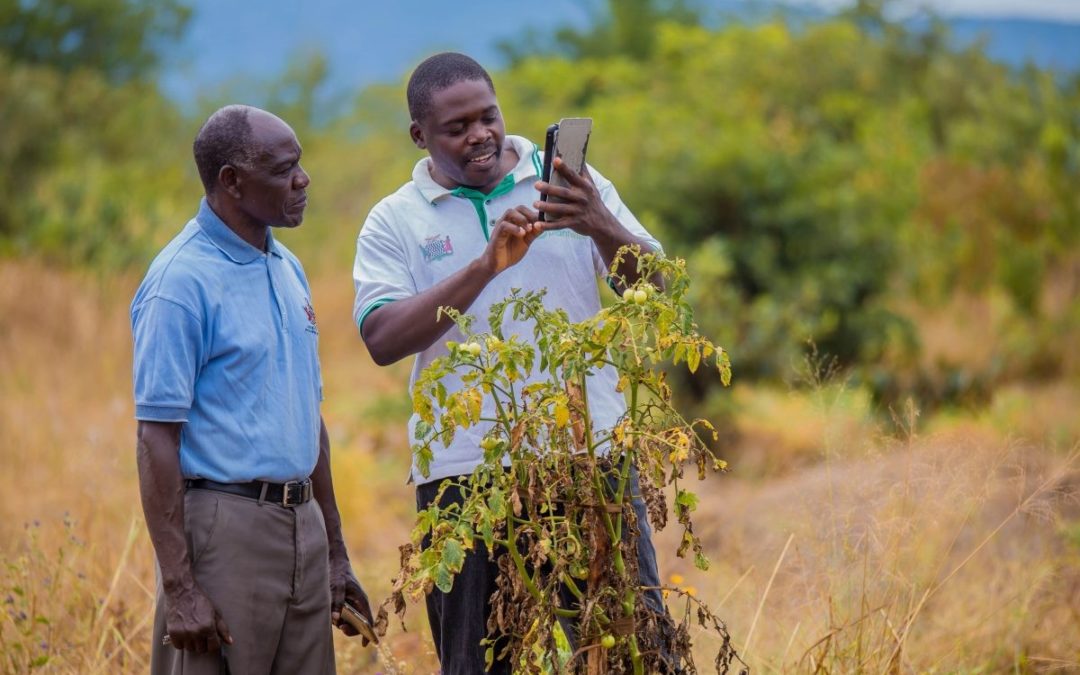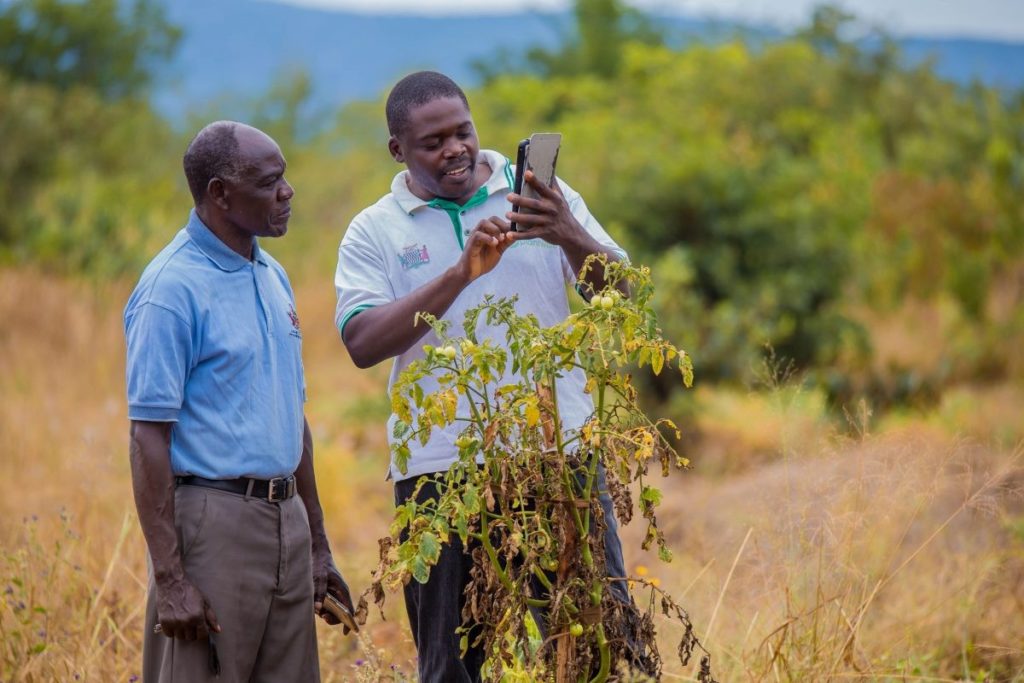Filling a need for early-warning pest information in Sub-Saharan Africa
This blog is a submission to the Community of Practice on Data-Driven Agronomy’s blog competition on digital extension—an opportunity for those working in the digital extension in agriculture field to share their experiences with their technologies, business models, key challenges, and major bottlenecks, as well as how they solved such challenges, when creating and implementing innovative solutions.
The Pest Risk Information SErvice (PRISE) is a multinational consortium-lead project funded by the UK Space Agency, developing an agricultural pest risk forecasting service tailored to reduce crop losses and improve the livelihoods of smallholder farmers across Sub-Saharan Africa.
Led by the Centre for Agriculture and Bioscience International (CABI), Assimila Ltd, Kings College London and in-country partners, the project is in its third year of development, in which the team has expanded its coverage from Kenya, Ghana, and Zambia to now include Rwanda and Malawi.
Using a combination of earth observation climatic data, plant-pest lifecycle models, and in-country field observation data fed into an internal system which we have termed the ‘PRISE Data Cube,’ we are able to produce a novel pest outbreak forecast for major crop pests such as fall armyworm (Spodoptera frugiperda), tomato leaf miner (Tuta absoluta), and the African stem borer (Busseola fusca) on important cash crops including maize, bean, and tomato.
These forecasts are location specific, with in-built machine learning capabilities to capture crowdsource data which feed back into our models.
The PRISE forecast messages are sent throughout the cropping seasons to users via Telegram, using built-in AI technology, in the format of a bulletin-style report via national agriculture social messaging platforms.
The project is also exploring alternate channels for content dissemination. We’re working with in-country NGOs such as Precision Agriculture for Development (PAD) in Kenya to develop a novel fall armyworm advisory service. Through ongoing collaborations with in-country partners and local governments we hope to develop the PRISE service to reach over one million smallholder farmers and extension services across multiple channels and platforms so that all have access to time-sensitive, actionable pest forecasts and management recommendations.
What are the biggest challenges you have faced? How did you overcome them?
As with the nature of a multinational consortium-lead project, there are often challenges faced at all levels of project development and implementation. PRISE is an international project working with a range of multi-sector partners (public, private, civil society etc.) and specialisms (agriculture, meteorology, behaviour change, and data science). It is a common challenge that such groups are not familiar with working together which can cause barriers when working towards a common objective. PRISE is working hard to ensure that there is a clear vision and approach to delivering project objectives. Ways in which we are overcoming such issues are by holding project-wide stakeholder meetings which focus on points of mutual interest, whereas more targeted workshops and subject-focused agreements are set up for specific work streams (i.e. governmental agricultural research agencies carrying out field and lab work on crop pests).
PRISE is a research and development project which has great potential to fill a need for early-warning pest information in Sub-Saharan Africa, in a format and frequency that meets the needs of a range of stakeholders, including smallholder farmers. As the project is still in the development phase, we are still investigating the stakeholder environment to determine who would be interested and benefit from PRISE technology outputs.
Designing a service that meets the needs of multiple user groups across varying sectors is a challenge and an important issue to evaluate to ensure an effective project service whilst maintaining a level of sustainability. Recently, PRISE has focused a lot of attention of defining a product development approach whereby two complementary versions of the service will be developed: one that focuses on the pest model outputs and the encompassing advice that supports that, targeting extension workers, agricultural ministries, and NGOs involved with communicating directly to farmers, and a second service that allows user more bespoke data services for their own use, be that of the raw data, models, and data layering.
In your opinion, what is the main opportunity for digital extension services? What recommendations would you make in order to realize this opportunity?
Digital extension services have the ability to reach a global audience, notably, smallholder farmers in rural areas who commonly lack the necessary resources, opportunities and knowledge to support time-sensitive decision making and improve farm management practices in a way that will promote livelihoods and food security.
With technological advances comes more opportunities for supporting agricultural production, however a balance must be maintained between such developments and cultural practices for any project or programme to be sustained long-term.
Sufficient training and knowledge dissemination also need to be implemented to target communities to promote sustainability.
***
Photo: CABI.
Click here to view the full list of articles competing in the digital extension services blog competition.
January 20, 2020
William Holland
Project Officer
CABI
Latest news






